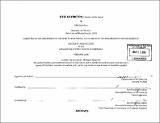| dc.contributor.advisor | Ann Pendleton-Jullian. | en_US |
| dc.contributor.author | Donohue, Lilly (Lilly L.) | en_US |
| dc.contributor.other | Massachusetts Institute of Technology. Dept. of Architecture. | en_US |
| dc.date.accessioned | 2006-11-07T12:05:33Z | |
| dc.date.available | 2006-11-07T12:05:33Z | |
| dc.date.copyright | 2006 | en_US |
| dc.date.issued | 2006 | en_US |
| dc.identifier.uri | http://hdl.handle.net/1721.1/34424 | |
| dc.description | Thesis (M. Arch.)--Massachusetts Institute of Technology, Dept. of Architecture, 2006. | en_US |
| dc.description | Includes bibliographical references (p. 119-120). | en_US |
| dc.description.abstract | This project considers the duality of friction as a force which is simultaneously threatening and essential; responsible for destruction and violence, yet vital in precipitating progress and new relationships within the urban context.The thesis uses Boston as a case study and investigates its history of social conflicts from its puritan origins to present day.The recent shift to a sublimation of friction between groups within the city is theorized as a source of stagnation.The project examines this issue, centering on two adjacent yet isolated communities in the Dorchester neighborhood and proposes the introduction of a series of physical borders which are housed within several seemingly banal commercial buildings.The border is offered here not an object to further divide, but paradoxically as a necessary edge condition which permits contact and thus re-establishes friction between these neighborhoods. | en_US |
| dc.description.statementofresponsibility | by Lilly Donohue. | en_US |
| dc.format.extent | 121 p. | en_US |
| dc.format.extent | 7568749 bytes | |
| dc.format.extent | 7796048 bytes | |
| dc.format.mimetype | application/pdf | |
| dc.format.mimetype | application/pdf | |
| dc.language.iso | eng | en_US |
| dc.publisher | Massachusetts Institute of Technology | en_US |
| dc.rights | M.I.T. theses are protected by copyright. They may be viewed from this source for any purpose, but reproduction or distribution in any format is prohibited without written permission. See provided URL for inquiries about permission. | en_US |
| dc.rights.uri | http://dspace.mit.edu/handle/1721.1/7582 | |
| dc.subject | Architecture. | en_US |
| dc.title | Sites of friction : borders of the banal | en_US |
| dc.title.alternative | Borders of the banal | en_US |
| dc.type | Thesis | en_US |
| dc.description.degree | M.Arch. | en_US |
| dc.contributor.department | Massachusetts Institute of Technology. Department of Architecture | |
| dc.identifier.oclc | 70277888 | en_US |
